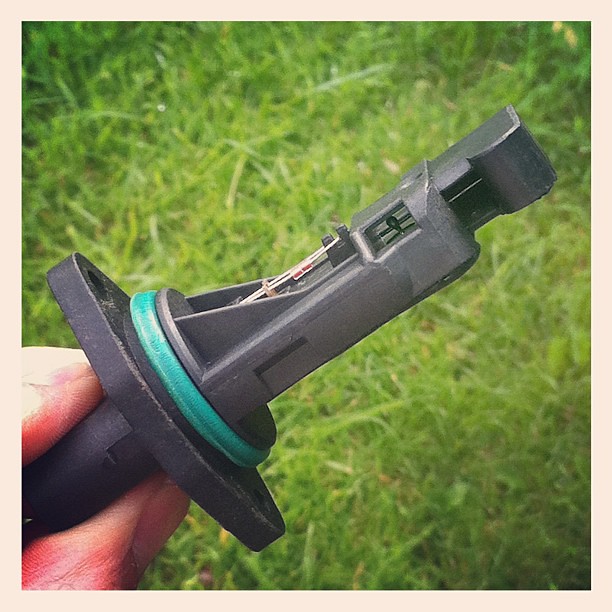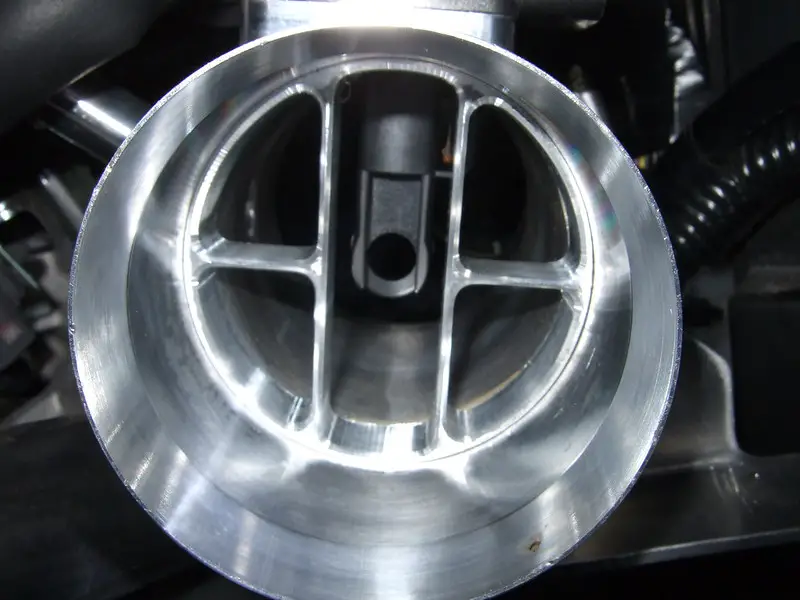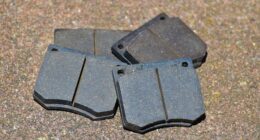After understanding the differences between MAP sensors and MAF sensors, it’s clear that both play a vital role in ensuring your engine runs smoothly. While both measure airflow, they do so in different ways, which can affect performance.
What is a MAP sensor?
(Photo by ALTEREDSNAPS)

A manifold absolute pressure (MAP) sensor is a device that measures the pressure inside your vehicle’s intake manifold. It helps the engine control unit (ECU) determine how much fuel to inject into the combustion chamber.
The MAP sensor works by comparing the barometric pressure outside of your car with the pressure in its intake manifold. The ECU then uses this data to calculate how much air is entering the engine and adjust fuel injection accordingly.
Most MAP sensors are made up of a sensing element, which detects changes in air pressure, and an electronic circuit board that converts these readings into electrical signals that can be interpreted by your car’s computer system.
One significant benefit of MAP sensors over other types of airflow meters is their ability to measure boost levels accurately. This feature makes them ideal for turbocharged or supercharged engines where you need precise control over how much boost is being delivered to the engine.
What is a MAF sensor?
(Photo By Wapster on Flickr)

A MAF sensor, or mass air flow sensor, is a device in a car’s engine that measures the amount of air entering the engine. This information is then used by the car’s computer to determine how much fuel to inject into the engine for efficient combustion.
The MAF sensor uses a heated wire (or film) placed in the path of airflow to measure its speed and density. As air flows over this wire, it cools down and changes its resistance. The change in resistance can be measured and converted into an electrical signal that can be interpreted by the car’s computer.
MAF sensors are commonly found in newer cars as they provide more accurate readings than other types of sensors. They also have fewer moving parts which make them less prone to failure.
One downside of MAF sensors is that they can become dirty over time which can affect their accuracy. However, many modern cars have self-cleaning MAF sensors that help prevent this issue.
MAF sensors play a crucial role in ensuring your car runs efficiently and smoothly by providing accurate measurements of airflow entering your engine.
How do MAP and MAF sensors work?
MAP and MAF sensors are both crucial components of the engine management system in modern cars. While they have different functions, they work together to ensure that the engine performs optimally.
The MAP sensor measures the pressure inside the intake manifold. This information is used by the engine control unit (ECU) to calculate how much fuel should be injected into each cylinder. The ECU adjusts the fuel injection timing and volume based on this data so that your car runs smoothly at all speeds.
On the other hand, MAF sensors measure how much air flows through the engine’s intake system. They use a hot wire or a film element to determine airflow rate accurately. The ECU uses this data along with other inputs from various sensors to adjust fuel delivery accordingly.
Both types of sensors play critical roles in ensuring that your vehicle operates efficiently and economically while minimizing emissions output. It’s essential always to keep them clean and free of dirt as any dirt can cause incorrect readings which could lead to poor performance or even failure over time.
What are the benefits of MAP sensors?
MAP sensors or Manifold Absolute Pressure sensors are an essential part of modern engine management systems. These sensors measure the pressure inside the intake manifold and provide valuable data to the engine control unit (ECU) to optimize fuel injection, ignition timing, and other vital parameters of your car’s performance.
The key benefit of MAP sensors is their ability to accurately measure engine load across a wide range of operating conditions. This allows for finer tuning of the air-fuel mixture and ignition timing, resulting in improved throttle response, better fuel economy, and reduced emissions.
Another advantage of MAP sensors is their simplicity compared to other types such as MAF sensors. They do not require a separate airflow meter or temperature sensor, making them less prone to failure due to contamination or mechanical damage.
Furthermore, MAP sensors have higher accuracy at low engine speeds when compared with MAFs which makes them ideal for use in turbocharged engines where they can detect changes in boost pressure more quickly than MAFs that only rely on measuring airflow alone.
In summary, some benefits associated with using MAP Sensors include: accurate measurement over various conditions; simpler design leading towards efficiency; high accuracy even at low speeds; faster detection time relative to alternative solutions like MAF Sensors
What are the benefits of MAF sensors?
MAF sensors, also known as Mass Airflow Sensors, are another important component of modern engine management systems. These sensors measure the amount of air that enters the engine and help to calculate the correct fuel-to-air mixture required for optimal performance.
One of the biggest benefits of MAF sensors is their accuracy in measuring airflow. Unlike MAP sensors, which can have discrepancies due to changes in altitude or barometric pressure, MAF sensors provide precise readings regardless of external factors.
Another advantage of MAF sensors is their ability to detect changes in airflow quickly and efficiently. This allows for rapid adjustments to be made to the fuel-to-air ratio, resulting in a more responsive and efficient engine.
Additionally, MAF sensors are less likely to become contaminated with debris or dirt compared to other types of intake air measurement devices. This makes them highly reliable over long periods without requiring frequent cleaning or maintenance.
Incorporating an accurate and reliable MAF sensor into your vehicle’s engine management system can result in improved performance, increased fuel efficiency and lower emissions output – making it a worthwhile investment for any car enthusiast looking to optimize their ride.
Which type of sensor is right for your car?
When it comes to choosing between MAP and MAF sensors for your car, there is no one-size-fits-all answer. The right type of sensor for your car will depend on a variety of factors, including the make and model of your vehicle, as well as any modifications that have been made.
If you are looking for a cost-effective solution that provides reliable performance in most driving conditions, then a MAP sensor may be the way to go. On the other hand, if you want more precise measurements and greater flexibility in tuning your engine’s air/fuel ratio, then an MAF sensor might be the better choice.
Ultimately, the best way to determine which type of sensor is right for your car is to consult with an experienced mechanic or tuner who has experience working with both types of sensors. They can help you weigh the pros and cons of each option based on your specific needs and budget.
Is an air flow meter the same as a MAF?
Many people confuse the terms air flow meter and mass air flow sensor (MAF) as being one in the same, but they are actually different components.
An air flow meter measures the amount of air entering the engine by using a spring-loaded vane or hot wire element to measure airflow. It is typically found on older vehicles that use a fuel injection system with an analog computer.
On the other hand, a MAF sensor works differently from an air flow meter. It directly measures the amount of mass flowing through an intake by utilizing hot wires or sensors that detect changes in temperature caused by passing airflow.
While both devices have similar functions, it’s important to note that only modern cars equipped with electronic control units (ECU) utilize MAF sensors. These devices provide more precise measurements than their predecessors did and work together with other sensors to help determine how much fuel should be injected into each cylinder for optimal performance.
While both an air flow meter and MAF sensor measure airflow within your vehicle’s engine, they operate quite differently and are not interchangeable parts.








